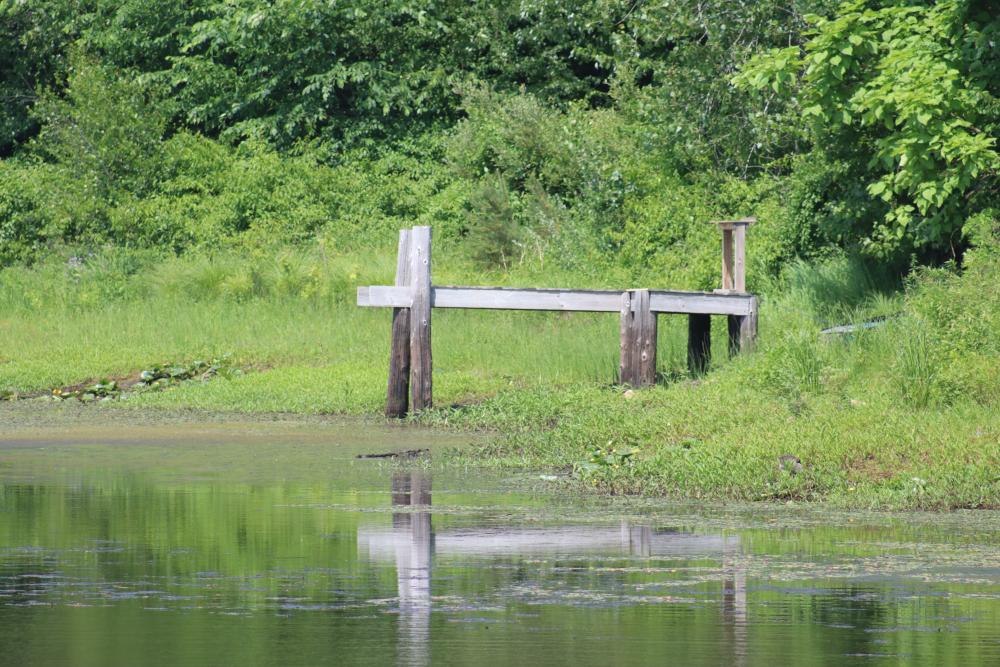Town ‘pulls the plug’ on Tremont Pond
Toward the end of April, residents of the neighborhood surrounding Tremont Pond noticed the 50-acre body of water drained, almost like the plug had been removed from a bathtub drain.
“The water in the Tremont Pond dam impoundment suddenly drained,” said Weaver Street resident Lisa Lindman. The draining left a small channel of running water in the middle of “a wide expanse of mud flat, dotted with pools of standing water, tree limbs and debris.”
As it turns out, the town had indeed pulled the plug from the Tremont Pond dam — though it does plan to replace the plug with operable gates.
Tremont Dam is located on Tremont Mill Pond, off Main Street before the West Wareham School. It is not the dam near Tremont Nail, which is named the Parker Mills Dam.
Prior to the drainage, the Tremont Pond dam had immovable barriers in place over its spillways, the channels where excess water can escape in the event of a flood.
According to town planner Ken Buckland, these barriers kept the water high, but also posed a threat in the event of flooding.
If the excess water from a major storm can’t pass through the floodgates, the pond could overflow, leading to major damage to nearby homes.
Earlier this year, the town was told it had to remove the barriers by the Federal Energy Regulatory Commission, which regulates the dam because it was a source of hydro-electric power.
The Tremont Pond dam was used for hydroelectric power from 1923 to 1938, according to the Buzzards Bay National Estuary Program.
In 1982, the town received approval to use the dam for power. However, the dam has not yet come online, despite the project being put out to bid in 2017 and a hydro-electric company considering its development in 2019.
The Federal Energy Regulatory Commission requested the town remove its barriers “due to the potential for overtopping and failure of the embankments during sudden high flow events,” according to a letter from the commission.
Lindman was concerned about the town leaving the dam and the pond in their current condition.
“I inherited the house from my mother, who bought it in 2000,” she said. “Its location on the pond, with its swans, wading birds and otters, was the primary reason she bought here, and a joy to see every day.”
In the weeks since the pond has been drained, Lindman has seen grass grow in its place, and deer now graze where the pond used to be.
She wants to see the town either restore the pond or tear the dam down entirely.
According to Buckland, the town plans to install operable gates on the spillways, replacing the former static barriers. This way, the level of the pond can be restored, and the gates can open to let the water through in the event of a flood.
Buckland said the town has everything ready to go with that project; it needs to put the project out to bid, but it has a contractor already interested in applying, he said.
Looking further out, the town has a developer examining the possibility of restoring hydro-electric power generation to the dam. That’s a separate project from re-installing spillway gates, said Buckland.
For now, the pond remains a place of mud and reeds, with a water level far below normal.













